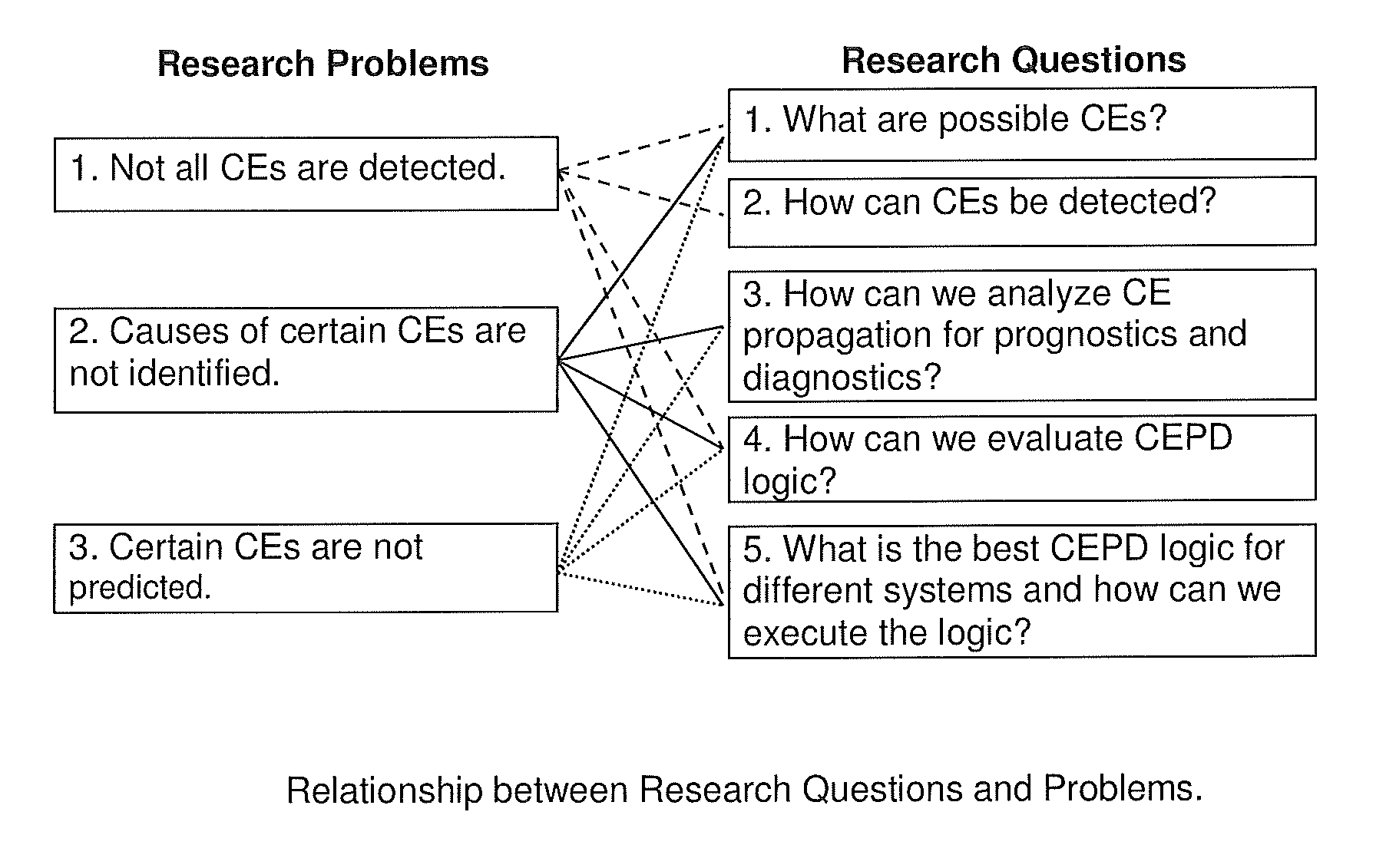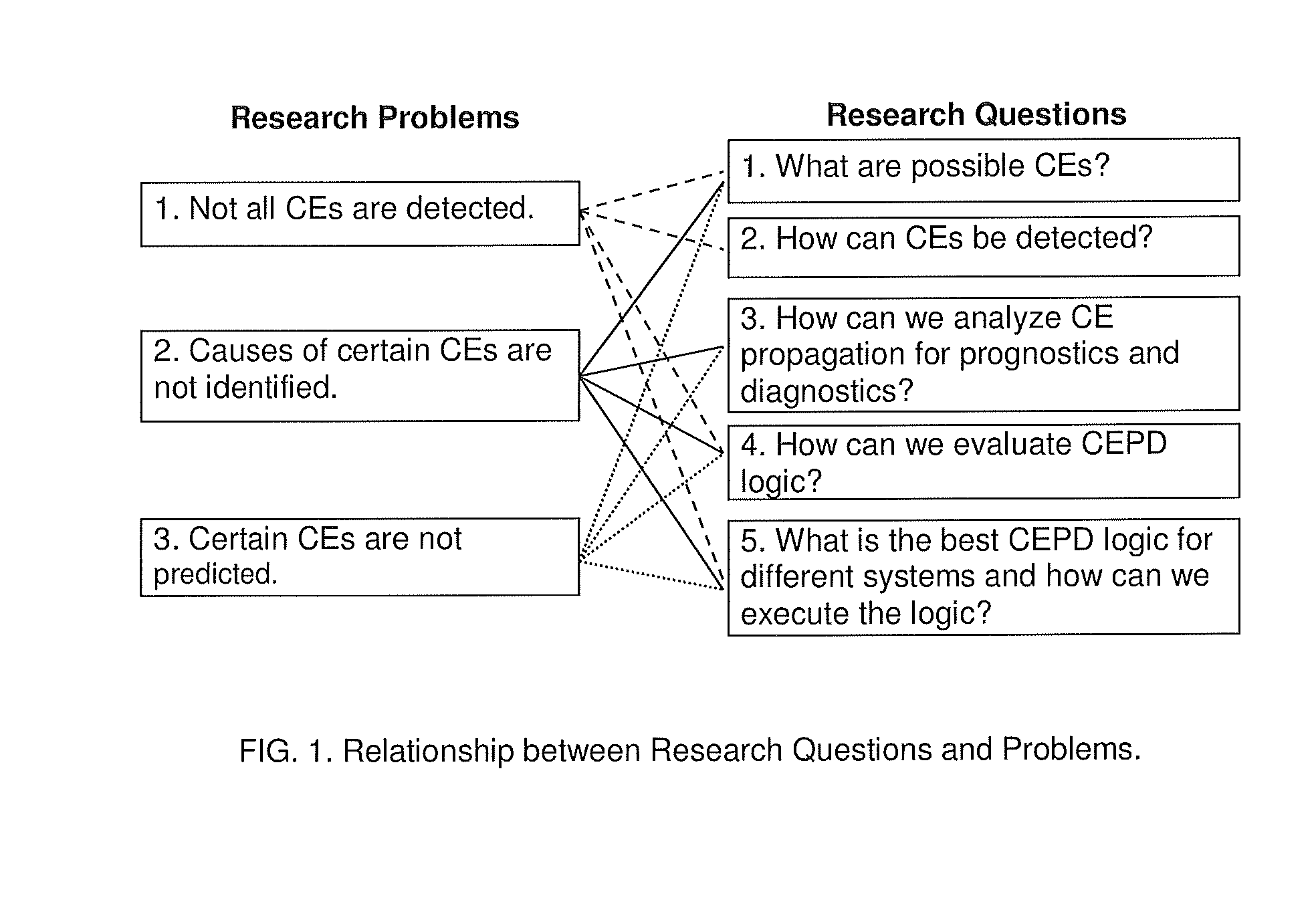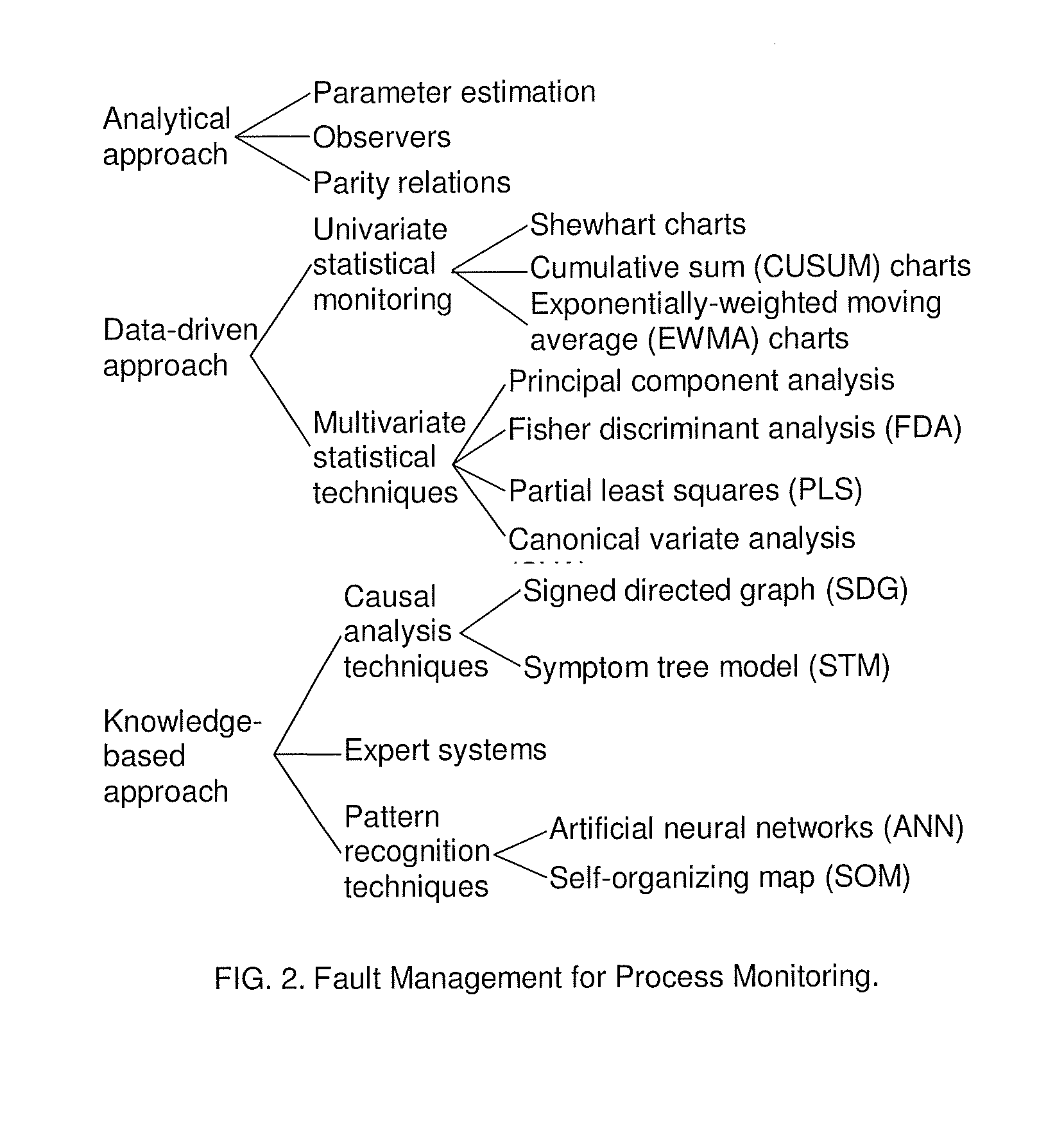Interactive, Constraint-Network Prognostics and Diagnostics To Control Errors and Conflicts (IPDN)
a technology of conflict and prognosis, applied in the field of interactivity, constraint-network prognostics and diagnostics to control errors and conflicts, can solve problems such as insufficient understanding of the basic concepts relating to the proper approach for different systems/networks, and the lack of all known models, methodologies, algorithms, protocols and tools in one respect. to achieve the effect of preventing and detecting
- Summary
- Abstract
- Description
- Claims
- Application Information
AI Technical Summary
Benefits of technology
Problems solved by technology
Method used
Image
Examples
application example
7.2. Implementation and Application Example
[0413]The general implementation steps to apply the CEPD Logic for a complex system are as following:[0414]1. System network identification (Ljung, 1999). This step determines the topology of the system and the type of links in the system. If the topology of the system is known, e.g., a highway system is a random network, the type of each link, i.e., directed or undirected, needs to be determined. Sometimes there are no appropriate theoretical network models that can be used to describe the system topology. System network identification is significantly influenced by how the system is modeled. For instance, the Internet can be modeled at the router level or at the server level. These two modeling approaches may lead to two different system network models in terms of topology, type of links, or network parameters;[0415]2. Constraint modeling and network identification. Once the network of the system is identified, each node in the network ca...
PUM
 Login to View More
Login to View More Abstract
Description
Claims
Application Information
 Login to View More
Login to View More - R&D
- Intellectual Property
- Life Sciences
- Materials
- Tech Scout
- Unparalleled Data Quality
- Higher Quality Content
- 60% Fewer Hallucinations
Browse by: Latest US Patents, China's latest patents, Technical Efficacy Thesaurus, Application Domain, Technology Topic, Popular Technical Reports.
© 2025 PatSnap. All rights reserved.Legal|Privacy policy|Modern Slavery Act Transparency Statement|Sitemap|About US| Contact US: help@patsnap.com



